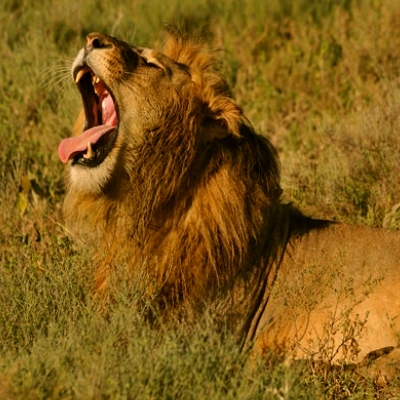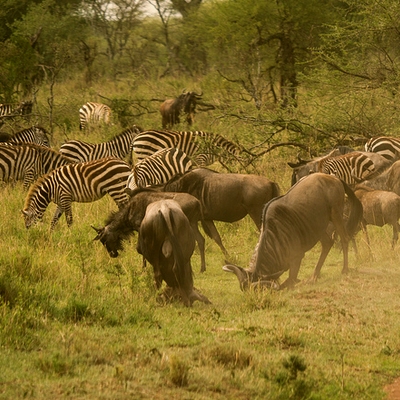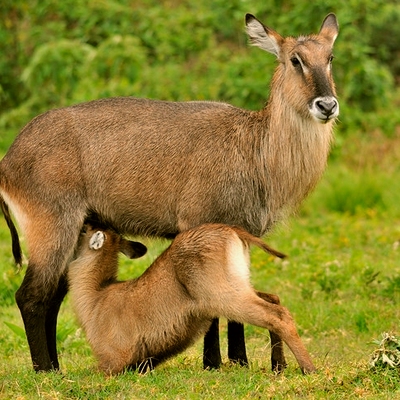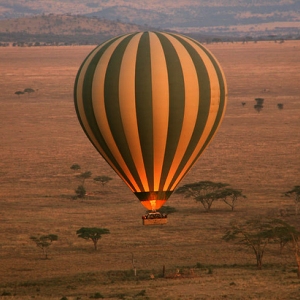With over 1 million tourists visiting Tanzania, this destinations remains the top preferred African safari country. Tanzania is the most popular African safari destination because of its wildlife covering 33,660km2,including UNESCO sites such as Serengeti National Park. Tanzania safari destinations are 16 National Parks and 29 Game Reserves where you can find the big five, African Elephants, African Rhino (white or black), African Lion, African Buffalo and African Leopard, also Hippos, antelopes, wildebeests are found in these wildlife safari places of interest. There are other conservation areas about 40 in number. This adds up to 38% of conserved land in Tanzania. This article helps you to plan for your Tanzania safari adventure the best way possible.
SPECIAL OFFERS FROM CREDIBLE SAFARI COMPANIES BELOW
There are a few questions that you may need to answer for yourself way before you even start to plan a safari to Tanzania for example; when do you intend to go for the safari, what kind of experience do you want to encounter; luxury, budget or something in-between? The first step to a successful planning is actually identifying your own needs. Having identified that, you can now contact a safari company or begin to sketch the journey on your own.
Planning A Tanzanian Safari on Your Own?
It is by far the easiest option to use a safari company in case you are booking a safari for yourself and this is mainly because there is a lot of paperwork that is involved even at the park entrances themselves which can be a little stressful, so imagine coming when this is already done for you. The accommodation in parks also requires pre-booking and trust someone who does this for a living to get you the best deals. You also need a guide who is well acquitted with the journey to move you around as opposed to doing it on your own.

How Much Can You Spend?
The biggest determination of price fluctuation is the group size and the level of accommodation. Do you prefer a top-end private Tanzania safari or you don’t mind staying in tents or sharing the keep with others? Accommodation varies from bush tents to tented lodges, private tented lodges and luxury lodges.
Most people usually prefer characteristic boutique hotels and thus end up mixing unique tented lodges with the luxury lodges. Most tourists in Tanzania spend an average of US $ 240 per person per night. Many have come to acknowledge that the combination is the best since tented lodges give them a profound insight into the surrounding while enjoying all the modern digs like comfortable beds, hot showers as well as 24/7 electricity.
Best Time To Go On Safari in Tanzania 2022
Best Time to Visit Tanzania
Often times holidaymakers ask us “When is the best and most favorable time to visit Tanzania“, well the answer is quite complicated as it depends on what you are going to do during your Safari in Tanzania, when you are traveling and where exactly you are going to visit.
Well in this article we analyze in depth Tanzania’s climate and offer you a guide on the best time to visit depending on when , where and what you are interesting in doing.
Best time for wildlife viewing
For the best views of wild animals found in Tanzania, we recommend that you visit during the dry season which starts in late June up to October. And then for those of you interested in seeing the annual herds of the great wildebeest migration that takes place in the renowned Serengeti National park and Masai Mara, you can visit in the months of June and July whereas the wildebeest calving can be seen from late January up to end of February. The Tanzania tours national parks of East Africa found along the western and southern circuit can visited in the dry season from June to October for the best rewarding wildlife views. And then for the more popular parks along the northern circuit they can be visited all-year-round with the exception of Tarangire which offers better wildlife views in the dry months.
Recommended Top 3 Safari Operators in no particular order
Seven Wonders Safaris Tanzania
New Bondeni Plaza 2nd Floor , Box 1118, Arusha – Tanzania. Tel +255 789 274 664, +255 765 820 506, +255 785 042 553,
Website: www.tanzaniasafaritrips.com
When is the Best time to Visit | Best Weather:
From June to October: during those months the country is experiencing a dry season, the skies are clear, day-time temperatures are warm and game viewing is at its best in all the national parks.
It is easier to see the animals during this time as the vegetation is thin and most of them are normally in large numbers around the rivers and waterholes. Because there is hardly any rain, there are generally very fewer mosquitoes.
This is referred to as the peak season because the number of tourists on Africa Safari in Tanzania is generally high especially in the Ngorongoro Crater and the Seronera area found within the Serengeti.
Because the early mornings and evenings (startng from around 6:00pm) are cold, we advise that you pack some warm clothes especially for the early morning game drives.
January to February: during these months there is very little rain as well, which makes it perfect to watch the wildebeests calving down in the southern part of Serengeti. it is also a great time to see a number of predator hunting.
Worst Time to Visit:
March, April to May (wet season / low season): during this time the country is experiencing the wet season, the rains are heavy and the vegetation is green and thick which makes it challenging to spot wild animals.
During this time, majority of the lodges in the southern-western circuits close down while the parks along the northern circuit still get some few visitors.
Although game viewing during these months is hard, bird watching on the other hand is at its best. Many of the migratory bird species have arrived.
Best time to Visit to Tanzania’s major parks
The Ngorongoro Crater and Serengeti offer great wildlife viewing all year round, however, June and July are perfect for seeing the wildebeest migration. Wildebeest calving can best be viewed in February.
The southern – western circuit parks (that include Ruaha, Katavi and Selous) together with Tarangire national park can best be visited from June to October.
Mountain climbing adventures are better taken during the dry months when the mountain trails are less muddy and slippery
Being in a tropical climate, the day time is 25°C to 32°C with evenings and early mornings cool. June To October is the best time to visit Tanzania due to the great migration of the wildebeest. April and May are considered wet months, but even during these months, animal safaris are a nice option with fewer safari tourists in the park.
Best Months to Visit: June, July, August, September and October. During these months there is little or almost on rain, so animals concentrate on water holes making it easier to view. No mosquitoes, clear skies for photography and viewing safaris.
Other good months: January, February and May.
Fair months: March, April, November and December.
Timing is very crucial when planning your safari to Tanzania and this also affects the price tag for both luxury safari tours and budget safaris. It is practically possible to see the great migration from here all year round but you may require longer legs during the wet season. It is quite easier to see wildlife in the dry season (from June to August) as animals usually gather around water sources. That being said, the low season may bring more discounted prices for accommodation and Tanzania tours as compared to the peak seasons. Tanzania Parks that are famous like Serengeti National Park Tanzania and Ngorongoro get extremely crowded in peak season which might turn off your wilderness fantasies.
However planning an itinerary during the wet season requires more careful planning and this is where the Tanzania adventure companies come in handy. Some parks have a rundown of animals especially after the great migration has passed and the water is also no longer available like Lake Manyara national park so it makes no sense arranging a game drive there. Beginning in March and ending in May is the low season in Tanzania.

Tailored or Fixed Tanzania Tour Safari Itinerary?
There are some Tanzania safari companies that offer fixed safari itineraries at more or less fixed prices and usually for fixed sized groups. This may not necessarily be a bad option if the suggested route fits into your likings but you have to bear in mind that these itineraries in most cases tour the beaten path. In-case your time is limited too; you may want to visit the highlights for example the famous parks. A pre-packaged private Tanzania safari could as well be a cheaper option as the company can get the best deals with hotels they frequent.
We still recommend that you ask if it is possible for the company to adjust the route according to what you prefer or if they can tailor the itinerary for you from scratch. This will also show you how flexible the company you are using can be.
What Makes the Best Tanzania Safari Itinerary?
If you are visiting Tanzania for the very first time and you don’t visit the super stars like the national parks of Ngorongoro and Serengeti, it would be criminal. With tourism developing very fast, we also suggest that you add some off beaten path parks such as Tarangire as well as some unusual experiences for example visiting a mountain village or coffee farm. This will be so astonishing but remember it still trickles down to one’s personal preferences.
Pay closer attention to the transfer times and the number of game drives in parks. You may need to ask you safari company if these times are realistic or can extend due to muddy roads full of potholes. This will enable you to determine whether you are comfortable with it. There are usually morning game drives that may require you to wake up quite early, have an early breakfast before heading out. Have the lunch away from the hotel and enjoy an afternoon game drive before finally checking into your hotel at around 7pm. This is quite a long day with the wild and you will enjoy every second of it therefore you need to brain storm if you can actually handle it. Remember the more game drives you have, the pricier the Tanzania safari gets.
This shows you that at the end of the day the best safari experience all depends on your personal preference. No matter how fixed the itinerary could be, each safari is different therefore using a reliable safari company will guarantee you the best trip ever therefore take time to plan and choose the Tanzania safari operator wisely so as to have a trip of your lifetime.

How Much Does A Safari To Tanzania Cost?
SAMPLE SAFARI PACKAGES AND COST
1. 2 Day Safari Ngorongoro & Tarangire
Duration: 2 Days
Arrival: Arusha.
Day 1: Tarangire National Park
Travelling Time: about 4 hours
Day 2: Ngorongoro Crater
Travelling Time:4 Hours
Cost: :$1100 per person.
3 Day Safari Ngorongoro, Lake Manyara & Tarangire
Day 1 Tarangire National Park
Distance: 130km
Travelling Time:3-4 hours
Day 2 Lake Manyara NP
Non-Game Viewing Time: 2-3 hours
Day 3 Ngorongoro Crater
Distance : 210km
Safari Cost $ 1700 per person
5 Day Safari cost $ 2900 per person
6 Day Safari cost $ 4212 per person
7 Day Safari $ 4700 per person
8 Day 4900 per person
TOP 10 THINGS TO OUGHT NOT TO MISS WHILE IN TANZANIA
Africa’s highest mountain and famous national parks and game reserves being in Tanzania has put the country high on the travelling map and making it a must go to destinations in the continent. Its rich eco-diversity offers plenty to see and here we have complied for you the top 10 things you can do while in Tanzania.
-
Climb Mount Kilimanjaro
 Mount Kilimanjaro is the highest mountain in Africa standing at a height of 5,895 metres above sea level which makes it very famous among ardent mountaineers. The mountain has three peaks namely Kibo, Shira and Mawenzi with the Uhuru peak on the Kibo crater rim being the highest. Climbing doesn’t come easy for everyone therefore there are a range of tour options that allow different climbing abilities. At lower levels of the mountain are hiking tours where travellers are given the opportunity to explore the craters, Shira plateau and wildlife while getting sight of the most scenic views. Near the mountain is a national park that is a UNESCO World Heritage site that one may visit if they don’t wish to climb or even after climbing. The average years of tourists to climb Kilimanjaro is between 25 and 44 years old.
Mount Kilimanjaro is the highest mountain in Africa standing at a height of 5,895 metres above sea level which makes it very famous among ardent mountaineers. The mountain has three peaks namely Kibo, Shira and Mawenzi with the Uhuru peak on the Kibo crater rim being the highest. Climbing doesn’t come easy for everyone therefore there are a range of tour options that allow different climbing abilities. At lower levels of the mountain are hiking tours where travellers are given the opportunity to explore the craters, Shira plateau and wildlife while getting sight of the most scenic views. Near the mountain is a national park that is a UNESCO World Heritage site that one may visit if they don’t wish to climb or even after climbing. The average years of tourists to climb Kilimanjaro is between 25 and 44 years old.
-
Take a balloon Tanzania Safari over the Serengeti National Park
 Serengeti is a UNESCO World Heritage Site comprising of 1.5 hectare of savannah and massive numbers of wildlife making it the most famous and oldest park in Tanzania. The park is very famous for its annual great migration where there is an influx of wildebeests, zebra, Thomson’s gazelle all stomping through the wide open plains, followed by their predators especially the cat family. Taking a balloon safari is the best way you can enjoy the site here and these are available all year round. Enjoy flawless photography opportunities of scenery and wildlife. 16 people travel in a balloon that is to say, it is its carrying capacity. This Tanzania expedition safari also includes breakfast amidst the wild followed by a drive through the park.
Serengeti is a UNESCO World Heritage Site comprising of 1.5 hectare of savannah and massive numbers of wildlife making it the most famous and oldest park in Tanzania. The park is very famous for its annual great migration where there is an influx of wildebeests, zebra, Thomson’s gazelle all stomping through the wide open plains, followed by their predators especially the cat family. Taking a balloon safari is the best way you can enjoy the site here and these are available all year round. Enjoy flawless photography opportunities of scenery and wildlife. 16 people travel in a balloon that is to say, it is its carrying capacity. This Tanzania expedition safari also includes breakfast amidst the wild followed by a drive through the park.
-
Ngorongoro Crater Tanzania Safari
 Ngorongoro crater is home to over 25,000 animals and this is a real world place of wonder and also a UNESCO world heritage site. It is only in Ngorongoro conservation area that you will find humans and wildlife living alongside each other in the volcanic caldera. The crater was a result of a giant volcanic eruption that collapsed on itself about two – three million years ago. It has flourished into a natural enclosure since harboring lots of wildlife you can see on an expedition like zebras, buffalos, rhinos, lions and wildebeests. You will enjoy game drives within the conservation area which is an ideal way of seeing animals in their natural habitat. Sleep in Ngorongoro crater lodge.
Ngorongoro crater is home to over 25,000 animals and this is a real world place of wonder and also a UNESCO world heritage site. It is only in Ngorongoro conservation area that you will find humans and wildlife living alongside each other in the volcanic caldera. The crater was a result of a giant volcanic eruption that collapsed on itself about two – three million years ago. It has flourished into a natural enclosure since harboring lots of wildlife you can see on an expedition like zebras, buffalos, rhinos, lions and wildebeests. You will enjoy game drives within the conservation area which is an ideal way of seeing animals in their natural habitat. Sleep in Ngorongoro crater lodge.
-
Beaches of Zanzibar
 The most perfect way of concluding a safari is by relaxing at the array of beaches that line the island of Zanzibar. The east coast offers unending coral reefs with white sandy beaches which are lined with a number of coconut palms as well as small cloves that shelter from the wind. There are coral cliffs and lagoon coves the southwest which give you the opportunity to escape to a less touristy spot, and Non-tidal beaches between Nungwoi and Kendwa along the northwest coast. The islands in the southwest have secret beaches which make it ideal for picnic encounters as well as the northeast island of Mnemba which is thought to be the finest beach in Zanzibar Islands.
The most perfect way of concluding a safari is by relaxing at the array of beaches that line the island of Zanzibar. The east coast offers unending coral reefs with white sandy beaches which are lined with a number of coconut palms as well as small cloves that shelter from the wind. There are coral cliffs and lagoon coves the southwest which give you the opportunity to escape to a less touristy spot, and Non-tidal beaches between Nungwoi and Kendwa along the northwest coast. The islands in the southwest have secret beaches which make it ideal for picnic encounters as well as the northeast island of Mnemba which is thought to be the finest beach in Zanzibar Islands.
-
Zanzibar Tanzania Safari Holidays
 The stone town of Zanzibar is a Swahili coastal trading town filled with intriguing history. Exotic spices, explorers, sultans and sea traders all make up part of history of this town as much of the historic sites remain intact. It comprises a range of influences from other traditions and cultures being imprinted and interesting architecture of coral stone building lining the narrow streets.
The stone town of Zanzibar is a Swahili coastal trading town filled with intriguing history. Exotic spices, explorers, sultans and sea traders all make up part of history of this town as much of the historic sites remain intact. It comprises a range of influences from other traditions and cultures being imprinted and interesting architecture of coral stone building lining the narrow streets.
-
Scuba Diving off Mafia Island Tanzania Safari Holidays
Mafia Island is the largest of all small archipelago islands and is situated off the coast of Tanzania. It is famous for scuba diving and deep sea fishing where most residents engage in fishing. There is plenty of aquatic life here with much of the coral gardens remaining unspoiled through the protection of the Mafia Island Marine Park. The park combines a varied range of unique landscapes under the sea as it is situated between the open Indian Ocean and Rufiji river delta. Divers get the opportunity to swim with whale sharks with the outstanding reefs as well as 400 species of fish. Diver level sites are available on the island from beginner to the experienced.
-
The Ruins of Kilwa Kisiwana, Tanzania Safari
Kilwa Kisiwana was at one time a flourishing Arab city state till majority population relocated to Kilwa Masoko. The place now remains as a major medieval port on an island just away from the coast if Tanzania. Much trade that took place in Indian ocean passed through Kilwa Kisiwana which made it of much interest among the early European explorers. The ruins now comprise an Omani fortress, mosques, the great palace, graves as well as the remnants of what once stood as the largest building in sub-Saharan Africa.
-
Chimpanzees of Gombe Stream National Park
Stream national park is the smallest national park in Tanzania sitting on a stretch of only 20 square miles. It has a fragile strip of chimpanzee habitat along the steep slopes and river valleys near the northern shore of Lake Tanganyika. In 1965 a conservationist by the names of Jane Goodall founded the Gombe Stream research center and this made the park renown. 200 types of birds can also be found here as well as beachcomber baboons. Hundreds of small boats can be spotted on the lake in evenings glowing to the setting sun. You can enjoy trekking chimpanzees, hiking, swimming, visiting local sites and snorkeling.
-
Maasai Cultural Tour
The Maasai are a world renowned tribe living close to game parks in north of Tanzania. They are mainly known for their unique lifestyle and customs. Although the origin of the Maasai tribe is not clear, their history spans over a 2000 year period. Tours to the Masai land are available and tourists can get to see for themselves the uniqueness of Maasai and also engage in some of their activities.
-
Boat Safari in Selous Game Reserve
Selous game reserve is one of the largest protected areas and the largest game reserve you can visit on an African safari as it covers an area of more than 50,000 square kilometers. It covers 5% of Tanzania’s land area and runs across 5 regions. It is home to vast numbers of wildlife including wild dogs, hippos, elephants, antelopes, buffalo giraffes, leopards, lions, crocodiles, wildebeest and a range of bird life. It also has a major geographical feature the Rufiji river where you can take a Tanzania safari on boat and be able to see a vast range of flora and fauna.
This is our compilation of safaris in Tanzania. We would like to know your thoughts on this!
Other Destinations worth mentioning
- Arusha National Park
- Serengeti Safari
- The Rift Valley Viewing
- Olduvai Gorge
- Ruaha National Park
- Zanzibar Island
- Dar Es Salaam
- Lake Victoria
- Pemba Island
A Great Safari Video Below
How to visit Tanzania cheaply
To take a safari in Tanzania you do not need to have a five or six figure salary. Tanzania has so much to offer to its tourists irrespective of how big or small your budget is. in this article we offer you five ( 5) top suggestions that can help you to visit Tanzania while on a limited budget.
- Choose to Travel as a group
Taking your safari as a group is not only fun but also very cost effective. It is more like purchasing things in bulk. You will be able to share a number of costs such as car hire, fuel for the car and the fee for your safari guide. The more you are in a group the cheaper it will become.
- Go Backpacking
Another exciting way to explore Tanzania cheaply is by backpacking. You will have an opportunity to visit the various beautiful attraction sites and parks within the country such as the Usambara Mountains and the Ngorongoro Crater. Fortunately there are a number of hotels within the country that are specially tailored to accommodate backpackers and among these are: Kilimanjaro Backpackers Hotel among several others.
- Wisely Choose your Accommodation
Tanzania has a number of affordable yet very comfortable and safe accommodation options for any one on a minimal budget. These include guesthouses offering bed and breakfast. These are more appropriate for sociable holidaymakers as the owners are very friendly people, the meals are delicious and they may offer you some basic services including Wifi. Some of the backpacker accommodation facilities provide communal kitchens where guests can prepare a meal.
- Where to Eat
In order to keep the costs down, the trick is to either prepare your own meal or eat in the local restaurants. He local dishes are normally very tasty, cheap and healthy. In case you are eating fruits, ensure that they are properly washed and if possible peel them. In case you are staying in a self catering accommodation take time to explore Uganda’s varied food basket as you prepare your own meal.
- Use Public Transport to Get Around
There are several means of public transport available within Tanzania which you can use to get from one place to another and these include boda bodas (motor cycle rides) and buses. The advantage with these is that they are very cheap compared to hiring a private car for your safari. The most important thing to remember is that before you get onto any bus, as the manager back at your hotel about the bus fares and for directions to the bus terminals. Considering the fact that the people of Tanzania are generally very friendly, do not be surprised when you get a free guide while on the bus.
So don’t get intimidated by how much you have saved up for your safari to Tanzania, you can always enjoy your adventure in Tanzania even on a limited budget, so start now and plan for your holiday in Tanzania.
What to see on a Tanzania Safari
Tanzania is known as Africa’s best Wildlife destination as well as the best place you can enjoy an authentic African safari with endless views and different wildlife encounters including Africa’s Big Five (5).
Below are the top things you should look out and see on your Safari in Tanzania
- See Africa’s Big Five Animals
Thanks to the sixteen (16) national Parks found in this beautiful tropical country, one thing you should be sure of is seeing Africa’s Big Five animals during the thrilling game drives in Tanzania. These are Africa’s top sought after animals and they include: the Cape buffalo, African elephant, lion, rhino and the leopard. Besides the big 5, other animals include , Giraffe towering in Acacia trees, Cheetah, Antelope, black rhino, hippo,
- See the internationally fames Annual Wildebeest Migration
The wildebeest annual migration which attracts thousands and thousands of tourists into Tanzania involves a large herd of over one million animals migrating from the Serengeti National Park into the Maasai Mara National Reserve in search for green pastures. With the highest number being wildebeests, several zebras plus some impalas, elands, Thomson’s Gazelles, Grant’s gazelles make up this big herd and this is tailed by a number of predators like lions and zebras wishing to feed on these animals. This tour is perfect for photographic safari lovers.
- Enjoy a Bird Watching Tour
The African continent prides in a birdlist of more than 2550 different bird species and Tanzania is one of the best destinations you can enjoy a bird watching trip. Among the unique species you will see on our Tanzania Birding Safari are: the Nubian Woodpecker, Red & Yellow Barbet, Grey Crowned Crane as well as the Malachite Kingfisher.
- Meet the Amazing Maasai People less affected by today’s modernization
Get a chance to meet the conservative, very hospitable people of the Masai tribe during our Tanzania Cultural Safaris. You will interact with these locals, participate in their day to day activities as well as join in their lively dancing that includes vibrant jumping, rhythmic bouncing and chanting. It’s a very fascinating performance.
- Enjoy a Safari up in the Sky in a Hot Air Balloon
Think about exploring the endless Serengeti plains up in a Hot Air Balloon as you watch right below you the different Serengeti animals including zebras, wildebeests, different antelopes and so many others. The aerial view of these plains is very breathtaking and a perfect option for honeymoon safari packages.
- Stand in the internationally famed Ngorongoro Crater
The Ngorongoro crater offers you a chance to see Africa’s Big Five Animals as well as meet the resident Maasai people as also stand on the floor of a crater! What a rare but very exciting opportunity this is.
- Camp in the endless plains of Serengeti National Park
Nothing beats camping under a star lit blue sky in the Serengeti plains home of the annual wildebeest migration. At the end of a long day’s adventure exploring the dusty tracks during the game drives, you will have a chance to camp in these plain as you watch the quite night interfered with an occasional lion roar pass away with the warmth coming from the big camp fire.
- See a Warthog Kneeling
Warthogs are commonly seen on a Tanzania safari in, and during the game drive you will catch a glimpse of a warthog kneeling. They usually assume this position while eating.
- Stare into the Wide Eyes of the Huge Elephant
The elephants are the largest known land mammal. On your visit in Tanzania our thrilling game dries will bring you close to these giant whose characteristic long tusks are also very amazing to look at.
- See the tree climbing lions
Visit Lake Manyara National Park and there you will get a chance to see the unique tree climbing lions. This is one of the only two (2) populations of this kind found on the African continent.
- See the amazing Sausage Trees.
just as the name says, these unique trees also referred to as Kigelia Africana have odd long dangling fruits that hang from their branches which so much look like sausages. These sausage fruits normally disguise the tails of large animals such as leopards which usually rest in the tree branches.
How to Get A Visa For Your Tanzania Safari
For anyone planning to enter into Tanzania either on business, Safari or any other reason is required to have the following three (3) document:
- a passport that is valid for at least six months from the date of arriving in the country or Travel documents,
- A pass or a residence permit
- Where applicable, a visa
Types of Visas issued in Tanzania
The Single Entry Visa or Ordinary Visa
This Visa is offered to people who intend to make a single entry into the country for a duration of not more than three months (3 months). This Visa is issued only for the following reasons: holidays, studies, business, leisure, medical treatment, or any additional activity that is legally recognized in Tanzania.
The Multiple Entry Visa
This Visa is offered for a period that is not more than twelve (12) months to people who by the type of their business or reasons for their travel are required to make a number of visits into Tanzania.
The Transit Visa
This type of Visa is offered for a period of not more than seven (7) days and is given to people who are in transit to another country going through Tanzania.
The Business Visa
A business Visa is offered to people who are traveling into Tanzania to carry out temporarily trade, professional duties, business or do an assignment and its offered for not more than three months. This Visa cannot be extended.
Referral Visas
There are also a number of countries whose nationals need special clearance before entering into the country and this can only be provided by either the Commissioner General of Immigration or Zanzibar’s Commissioner of Immigration and these include: Somali land, Afghanistan, Sierra Leone, Abkhazia, Azerbaijan, Bangladesh, Chad, Djibouti, Palestine, Ethiopia, Senegal, Eritrea, Equatorial Guinea, Somalia, Kazakhstan Republic, Kyigten Republic, Sri Lanka, Tajikistan, Lebanon, Turkmenistan, Mali, Uzbekistan, Niger, Mauritania as well as people with refugee-status or stateless people.
Countries whose Nationals Don’t Need A Visa
Antigua and Barbuda, Anguilla, Ashmore and Certie Island, Bahamas, Barbados, British Virgin Island, Bermuda, Cayman Island, Belize, Brunei, British Indian Ocean Territory, Botswana, Cyprus, Channel Island, Cook Island, Falkland Island, Cocoas Island, Dominica, Christmas Island, Gambia, Ghana, Gibraltar, Grenada, Jamaica, Jersey, Guernsey, Guyana, Heard Island, Hong Kong, Isle of man, Kenya, Kiribati, Lesotho, Malawi, Montserrat, Malaysia, Madagascar, Malta, Mauritius, Macao, Mozambique, Nauru, Naue Island, Solomon Island, Swaziland, Singapore, Seychelles, Norfolk Island, Papua new Guinea, Namibia, Samoa, Rwanda, Ross Dependency, Romania, Tonga, Turks & Caicos, St. Lucia, St. Helana, St. Kitts and Navis, South African Republic, St. Vicent, Tuvalu, Trinidad & Tobago, Zimbabwe, Tokelan, Uganda, Vanuatu and Zambia
Please Remember:
Having a Visa for Tanzania does not offer the holder an automatic right-of-entry into the country. you should keep in mind that the Immigration Officers at the country’s port of entry can deny entry to a person in case they are certain that the person doesn’t not fulfill the requirement to be here or whose presence many act as a security threat to the country.
Where can you get a Tanzania Visa?
Visas to Tanzania can be acquired from the Tanzanian embassies back in your home country or can be purchased directly upon your arrival in Tanzania at the airports or any of the border entry ports
How much does a Tanzania Visa Cost?
| TYPES OF VISA
|
MULTIPLE ENTRY VISA
|
SINGLE ENTRY VISA
|
BUSINESS VISA
|
TRANSIT VISA
|
| VISA FEES IN USD
|
100
|
50
|
250
|
30
|
Health Tips Before and During a Safari
As you plan to spend your holiday down in Africa on a Safari in Tanzania, we bring you a guide on how to remain healthy before, during and after your safari.
Health Preparation before going for your Tanzania Safari
- Ensure that you get all the necessary vaccinations before leaving home
You should make sure that you visit your general practitioner before setting off for your Tanzania safari. Ensure that you inform him / her of where you are going so that you get all the necessary vaccinations. Among the commonly taken vaccinations include: yellow fever, hepatitis A and B, diphtheria as well as tetanus
- Obtain comprehensive-travel insurance
It’s very important that you get travel insurance as you go for your safari, so that it covers you incase anything turns out wrong. Do a proper research to ensure that your policy you choose covers you well for all the different activities you intend to do during your safari.
- Take safety measures against malaria
Malaria which is rampant across southern and eastern Africa, it’s important to take all the necessary precautions against contracting it. Seek advice from your GP before you’re the safari whether you need to take any malaria medication.
- Pack a first aid kit
Carry with you a personal first aid kit with anti-inflammatory and anti-diarrhea medication, plus pain killers rehydrate solution, antiseptic cream, antibiotic ointment, sun-screen cream, bandages, plasters and tweezers.
- Pack something to clean your hands
Remember Africa is generally dusty and while on safari, you will definitely have to take stops to toilet, so carry some hand wipes and sanitisers to clean your hands.
Health Preparation during your Tanzania Safari
- Sleep under a mosquito Net
Ensure that in all the accommodations you will be using on your safari that you have a mosquito net fitted on your bed to ensure that you do not get bitten by the malaria causing mosquitoes.
- Use Insect Repellants
These are very useful especially as you go out for the day time adventures in the parks or forests, or even in the evenings while at your lodge. These will keep away all biting insects
- Drink Only safe water
Make sure that you only drink bottled water during your say is Tanzania. The only safer water to take here is boiled, purified or bottled water.
- Be cautious of where and what you eat
To prevent getting traveler’s diarrhea, be cautious of where and what you eat while you travel. the trick here is only eat hot food, and to ensure that it is freshly prepared order food from restaurants or stalls that is very busy. Don’t eat peeled fruits. In case of diarrhea, drink rehydrates solutions
- Use sun screen protection
Because the African sun is strong, you will need to use sun screen protection lotions while on safari to avoid getting sun burns.
- Keep your Body Hydrated
because during your safari you will spend most hours outdoors enjoy the various activities, drink a lot of safe water to keep your body hydrated and avoid getting dizzy or your skin becoming dry.
What to Pack for your Safari in Tanzania
Tanzania is one of the most visited countries on the African continent thanks to its unmatched large number and diversity of wildlife including ‘Africa’s Big Five’ and several adventure activities available. Over the years millions and millions of tourists have come from all parts of the world to explore the gifts of Mother Nature that this country enjoys.
However our several years of experience in this industry, we have come to learn that the commonest question that every traveler asks themselves is: “What to should I pack for my Tanzania Safari?” Well the answer is very easy; taking the right clothes and personal-items will keep you very comfortable and safe as well as increase your enjoyment of the various adventure activities during your Tanzania Safari. The general rule that we always give travelers is to always pack light and carry only the clothes and items they will need but not want.
In this article we bring you a list of some of the essentials you need to pack.
- Travel Documents and respective Essentials
A valid passport with a Visa
A photo copy of your passport
Your airline ticket
Yellow fever immunization health card
Travel and Medical insurance
Some US cash and credit card
- Which Clothes to Pack
There are just a couple of things you should have at the back of your mind when choosing which clothes to pack for your safaris in Tanzania and these include: the country generally experiences sunny weather so it is warm most of the year that way we recommend that you pack lightweight clothes in which you will be comfortable through the day’s heat. Also the most recommended are neutral colors as the safari parks are dusty so white clothes are not a choice, while the black colored clothes attract tsetse flies. So depending on the duration of your Safari pack the following:
4 short-sleeve T-shirts
2 long sleeve shirts
2 pairs of shorts
2 pairs of casual-trousers
A sweater or 2 sweatshirts
Underwear, hankies and Socks
A lightweight rain coat
- What type of shoes to pack
You will need a well fitting comfortable pair of hiking boots preferably one offering support for your ankle. These are very useful especially when you are going to take part in activities that include hiking or walking safari. You may carry a pair of casual sandals / shoes which you can wear back at you lodge during the evenings.
- Which Out Door Items to carry
1 wide-brimmed hat to protect your face from getting sun burns
1 pair of sunglasses
Insect repellant which you should use each time you are in the forest during nature walks, hikes or game drives
Sun screen protection – SPF 30
A waterproof bag to carry your camera and binoculars so as to protect them from the rain or dust
Tanzania has 220 – 240 volts as well as 50 hertz and its sockets are the British-type with 3 rectangular blade-pins.
- Personal items and other Accessories
A toilet kit that includes handy wipes, soap, toilet articles and a tooth brush
A towel
A money belt
Extra pair of batteries for your camera
Chargers for your electrical gadgets
Some reading material
A flash light
- What to include in your medical kit
All the medicines that you carry in this pack should be prescribed by your doctor and these include:
Aspirin
Valoid
Throat lozenges
Eye drops
Pain killers
Bandages
What to Wear on Tanzania Safari
Are you planning a Safari to Tanzania and puzzled about what to wear? in case you are asking yourself about which clothes you should wear as well as what you should pack for this safari, the key guideline here is to take comfortable casual clothes.
In this article we offer you a comprehensive guide on the most suitable clothes to pack and wear on your Tanzania Safari basing on the time of the year you are visiting as well as where you are going.
What to wear during the Dry Season
The dry season is the peak season for tourism activities with Tanzania.
The days are usually hot especially within the Savannah plains of Selous Game Reserve, Serengeti National Park, Ruaha, as well as Tarangire National Park. So when on a safari during this time, we recommend that you wear and also pack clothes with lightweight layers preferably in natural fabrics such as bamboo, cotton and linen. It a good choice to wear clothes with a breathable material as these will keep you cool and also they can easily be washed and dried back at your accommodation.
The early mornings and evenings are cold especially within the higher altitudes including Arusha – which is the starting point for most of the Tanzania Safaris as well as on the edge of the Ngorongoro Crater plus the nearby areas like Karatu. We therefore recommend that you pack a comfortable warm jacket or sweater, a scarf, pair of warm gloves and if you wish a warm hat wouldn’t be a bad idea.
What to wear during the Rainy / Wet Season
Definitely during this time temperatures are very low, the trails are muddy and slippery and the rain is fall. We recommend safari goers traveling during this time to park thick warm layer clothes, as well as a light raincoat, sweater, trousers, warm cloves as well as winter huts especially for the cold early morning adventure activities. Do not forget you comfortable hiking boots behind.
Colors To Avoid On Your Tanzania
Because the parks are generally dusty we recommend that you refrain from wearing or packing white clothes as these can easily get dirty. Also avoid dark colored clothes considering the fact that they absorb heat yet the day time is normally hot.
Which Clothes To Wear While Out In The Savanna Parks?
While out in the parks, we recommend that you avoid clothes in the colors of black or blue as they are believed to attract tsetse flies which spread sleeping sickness currently a very rear disease on the continent.
Another thing you should remember is that it is illegal to wear military or Camouflage clothing.
Safari hat: this is very important especially during the dry months. Ensure that you get ne with a wide brim to protect your face form sun burns.
Sunglasses: these are very useful remember down in Africa is sun is up and bright
Insect repellent: this will help repel all insects including the malaria causing mosquitoes.
Walking shoes: ensure that these are very comfortable and preferably offering good ankle support because you may have to walk
Long sleeved shirts or blouses: these come in handy especially when going on forest walks as they will protect your arms from being scratched by the piercing bushes
Khaki Pants or trousers: Since the game drives are conducted early morning when temperatures are still very low, these will keep you warm
Other Recommended Safari Clothing
- Pairs of comfortable shorts
- T-shirts
- Light cargo outdoor pants
- Pairs of socks
- Undergarments
- Sports bras
- Fleece jacket or sweater for the early morning game drives
- Light sandals
- A swimsuit for those staying at accommodations with a swimming pool
- A thin waterproof raincoat during the rainy season
- Flip flops or sandals to wear back at your accommodation
- Lastly while on safari, what we commonly regard as ‘dinner dress-code’ is normally casual comfortable these, so don’t forget to pack these as well for the evenings back at you accommodations as you relax and enjoy your dinner after a day’s adventure.
Other African Safari Destinations, Which Other Country To Visit After Tanzania.
Visit the mountain gorillas of Uganda and Rwanda, take on a Bostwana safari for Chobe national park, Okavango Delta and Etosha. Another addition would be Kenya safari tours, involving Masai Mara, Amboseli, Lake Nakuru, Natron. You can also take on African safari tours to South Africa, visit the higlands, Kruger for big game experience, Cape winelands,see the wild dogs,take on luxury camping,see the Oryx, Kudu and much more African wildlife off the beaten path.










